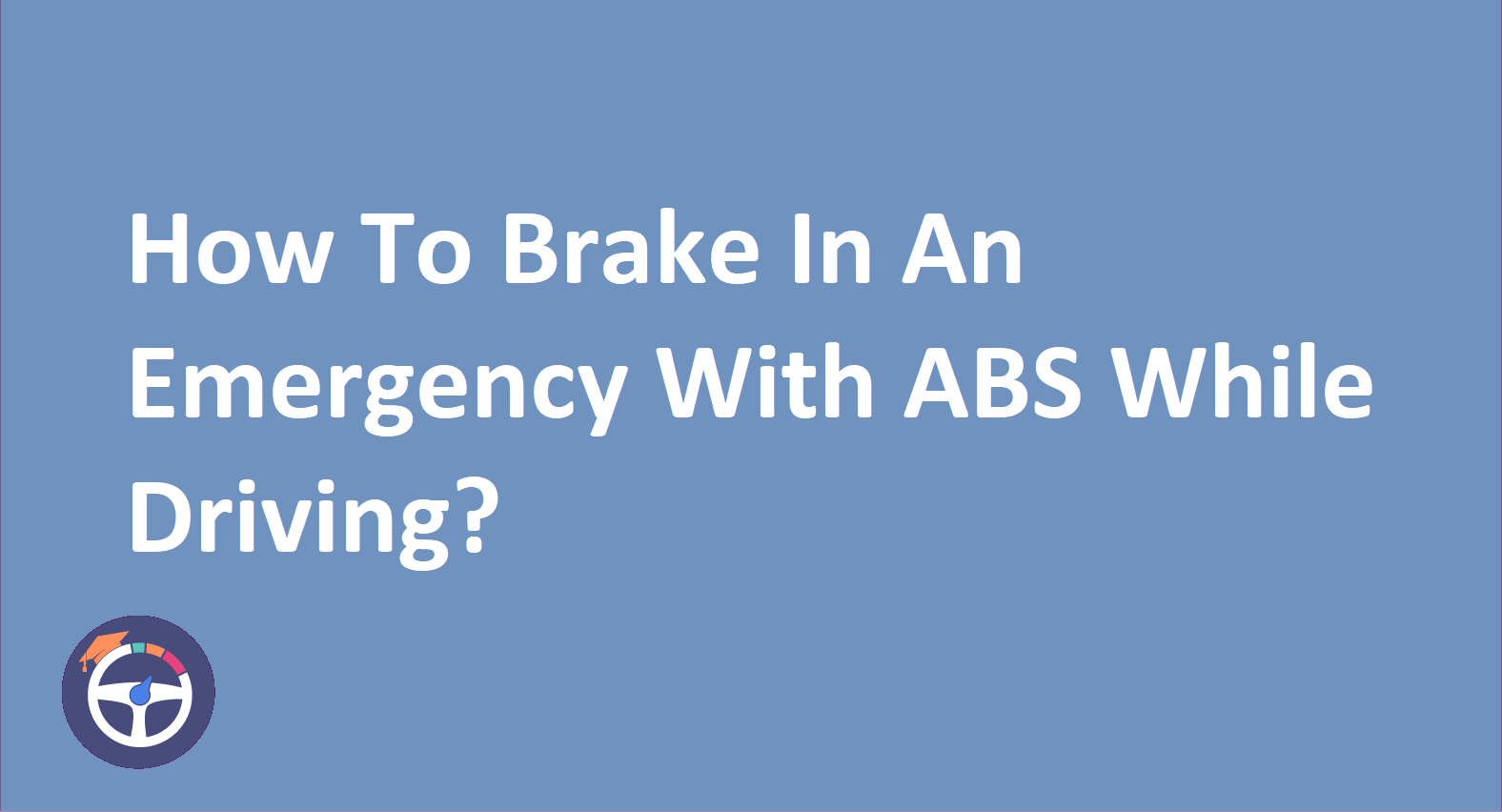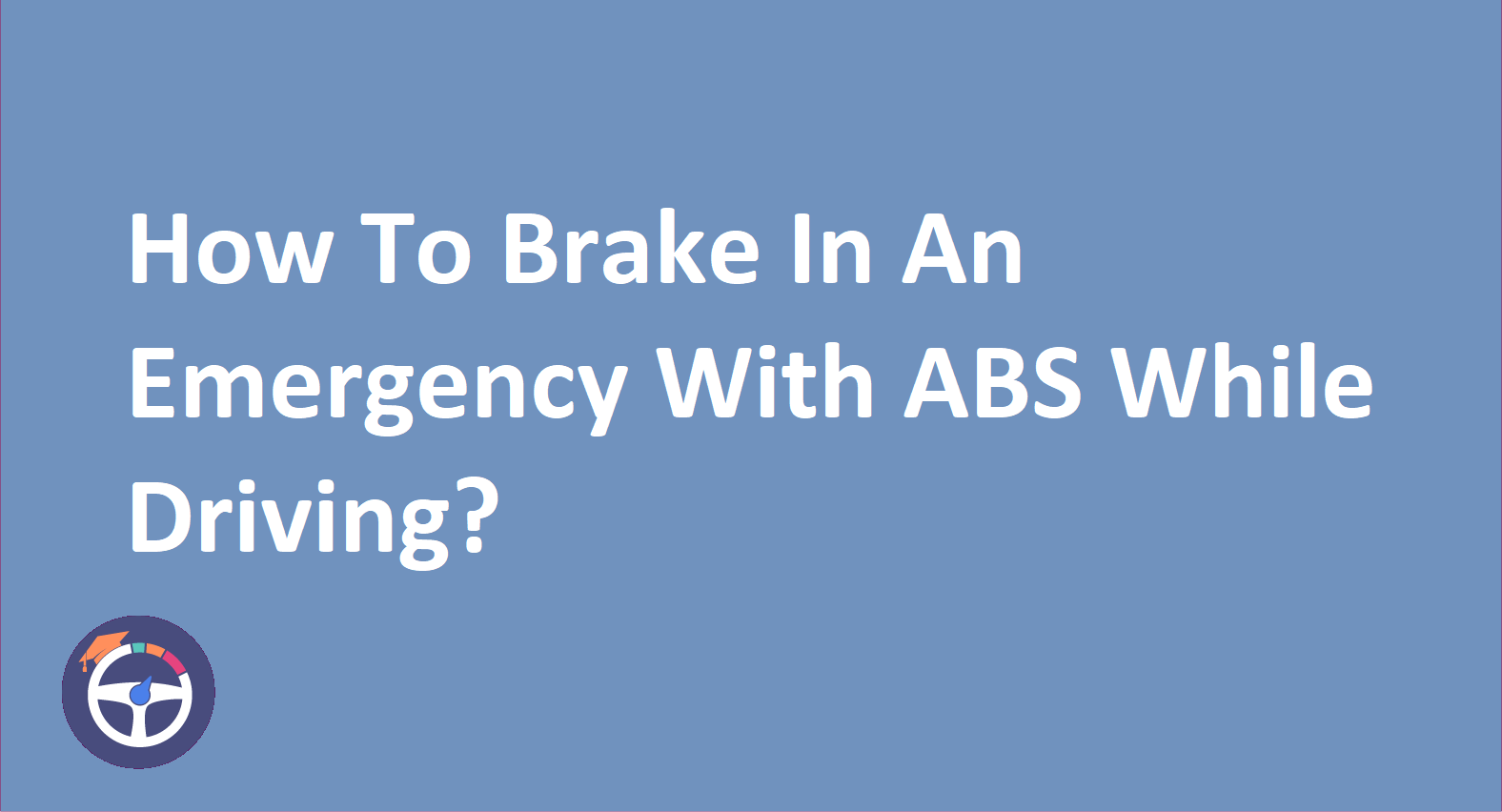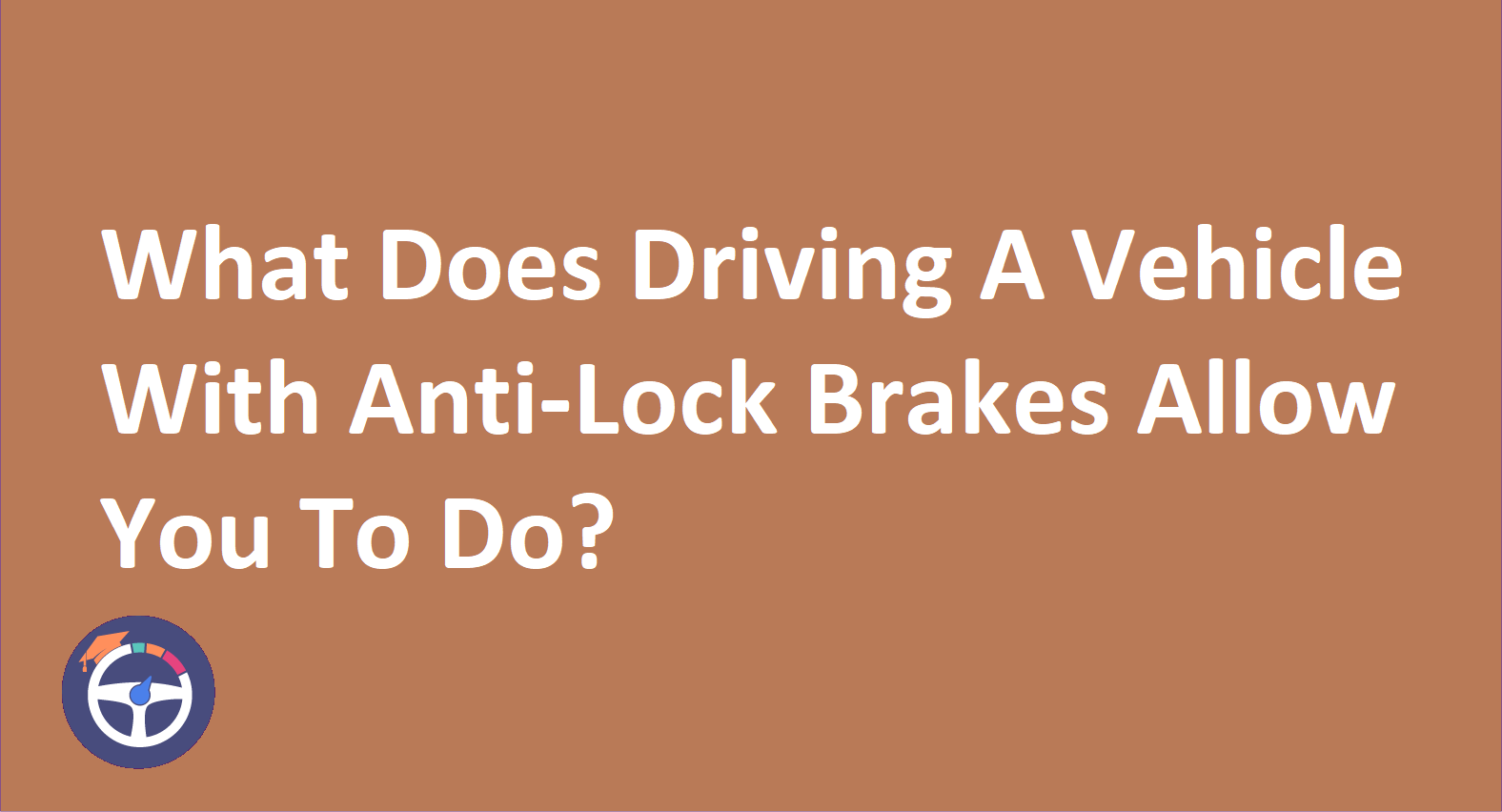How To Brake In An Emergency With ABS While Driving?
As you drive, keep an eye on the road ahead and ensure you have enough time and space to react to potential hazards. You might need to stop suddenly due to another driver's mistake or an unexpected danger, like a child running into the road. If your vehicle has anti-lock brakes (ABS), press the brakes immediately and keep them firmly applied until you come to a complete stop.

When you're driving a vehicle with anti-lock brakes know when to engage the footbrake. The impact on your ability to stop safely can be significant.
Anti-lock brakes are a safety feature. Its purpose is to keep the wheels from locking up when applying brakes. It aids the driver in keeping control of the steering and averting skidding. Brake pressure is automatically modulated by the ABS system when you apply the brakes hard and quickly in an emergency. This helps to prevent wheel lock-up!
Apply The Footbrake:
You have to brake quickly if you find yourself in an emergency. To apply the footbrake with ABS correctly follow these steps:
1. Determine the Emergency: When driving remain vigilant and mindful of your surroundings. Recognize the emergency situation as soon as possible if you encounter a danger or must stop abruptly.
2. Firm and Constant Pressure: Using your foot apply a firm pressure to the footbrake pedal. Maintain a constant and steady pressure. It makes it possible for the ABS system to operate and adjust brake pressure as needed.
3. Avoid Pumping the Brakes: When utilizing ABS there’s no need to pump the brakes in contrast to cars without the system. Pumping the brakes could cause the ABS system to malfunction and become less functional.
4. Maintain Steering Control: When using the footbrake pay attention to keeping your grip on the steering wheel. Hold onto the wheel with both hands firmly. Point the vehicle in the desired direction. Particularly when attempting to avoid obstacles or dangers!
5. Remain Alert and Be Calm: It’s critical to maintain composure and alertness when under pressure. Avoid panicking and concentrate on using the emergency braking procedure correctly.
6. Observe ABS Activation: You may experience a pulsating feeling when the ABS system activates. A noise emanating from the brake was also audible. That’s perfectly normal. It means that in order to prevent wheel lock-up the ABS is in operation.
7. Adapt your Driving Style Accordingly: Because ABS helps to prevent skidding, be ready for any hazards. On wet or slick road surfaces, however, keep in mind that stopping distances may still be longer. Being ready to respond to potential threats in advance is essential.
To get the best performance out of the braking system in your car, stick to these recommendations. Never forget how crucial it is to drive defensively and with awareness. By doing this accidents will be avoided and the need for abrupt braking will be reduced.


